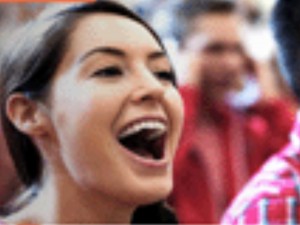Fan loyalty is everything in the sports business. So when Major League Soccer (MLS), the top flight pro soccer league in the US and Canada, wanted to deepen customer engagement, it started by getting a better understanding of its fans.

MLS wanted to reach out to fans with personalized information that matched their geolocation, club affinity and more. The idea was to be more engaging than simply sending out traditional static emails, and the key was in the data.
The approach MLS has taken involved building a fan database and then using marketing automation to get a better understanding of what their fans wanted based on the predictive analytics and data mining features of the solution.
Using marketing automation to build customer loyalty at MLS happens in four phases.
Phase 1: Data Acquisition
The goal in this phase is to establish a relationship with the fan based on collecting data. This is done by building a solid fan database from internal sources, such as its website and external sources, such as partnership activities.
Phase 2: Customer Engagement
Once MLS collects, compiles and pulls together its fan data to make it more meaningful, the organization can begin engaging with its fans. In their case, there are three main aspects to how the league engages with the fans: newsletters, personalization and contact strategy.
Phase 3: Monetization
In addition to attendance at games, the fan experience includes other important elements, such as merchandise and digital subscriptions. And what's good for one set of fans may not be what's right for another group of fans, so being able to personalize is key to building loyalty. For the clubs, being able to engage with fans in ways that are relevant based on accurate fan profiles is key to good business.
Phase 4: Loyalty
MLS has 19 individual clubs (16 in the US and 3 in Canada) and each one is responsible for developing fan loyalty, largely because much of the fans' affinity is to the individual clubs and not necessarily to the league overall. The important role MLS plays in supporting loyalty is through technology and analytics. Many of the clubs implement their own loyalty programs,with an emphasis on the most valuable fans - the season-ticket holders.
The value for the clubs is to be able to incent fan behaviors, such as getting them to the stadium an hour earlier, which would then impact the food and beverage sales. The value for the fans are often hard to put a price tag on, such as walking with the players into the games, or talking with the coaches.
Using marketing automation to drive fan loyalty at MLS is a win-win-win for all involved by engaging fans on their terms, and by uncovering ticketing and merchandizing opportunities for its clubs. For more details on this engaging story, please download the conclusions paper, Marketing Automation Drives Sports Fan Engagement.
Let me know what you think. And as always, thank you for following.
